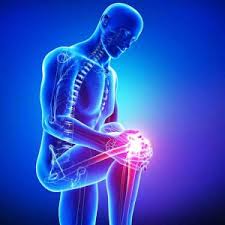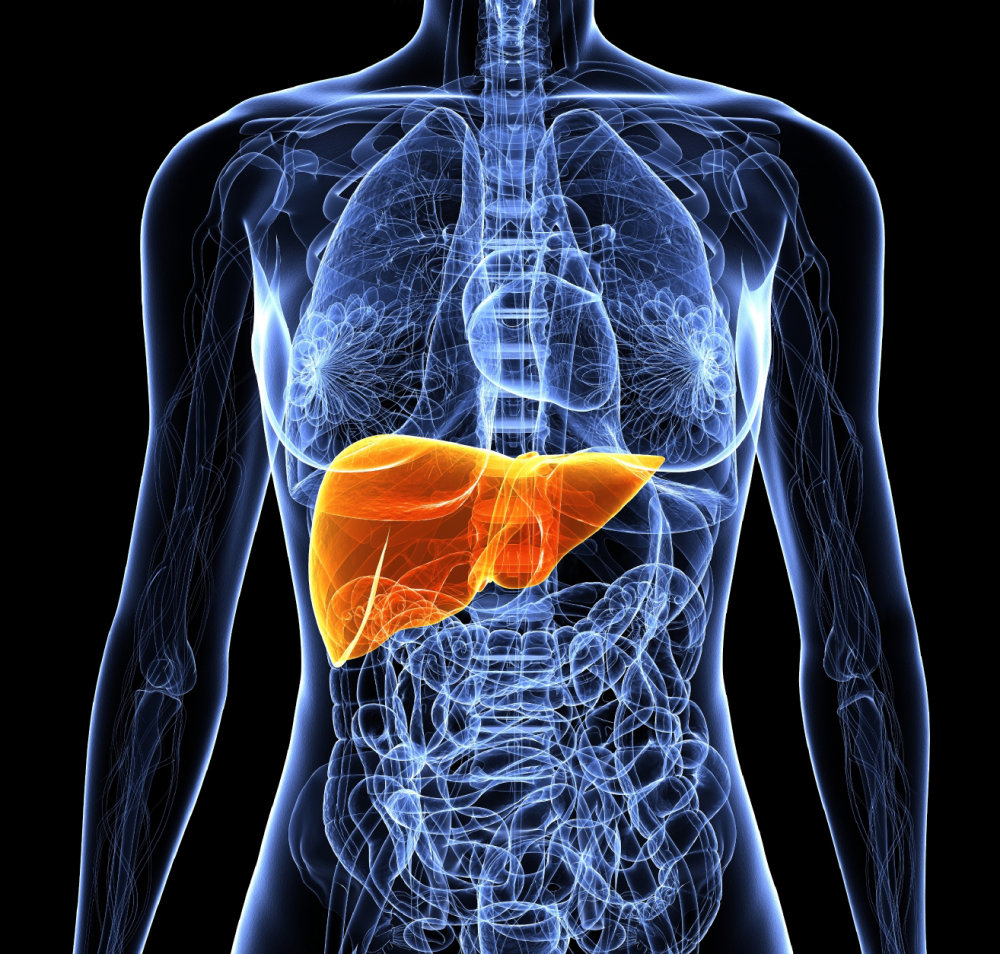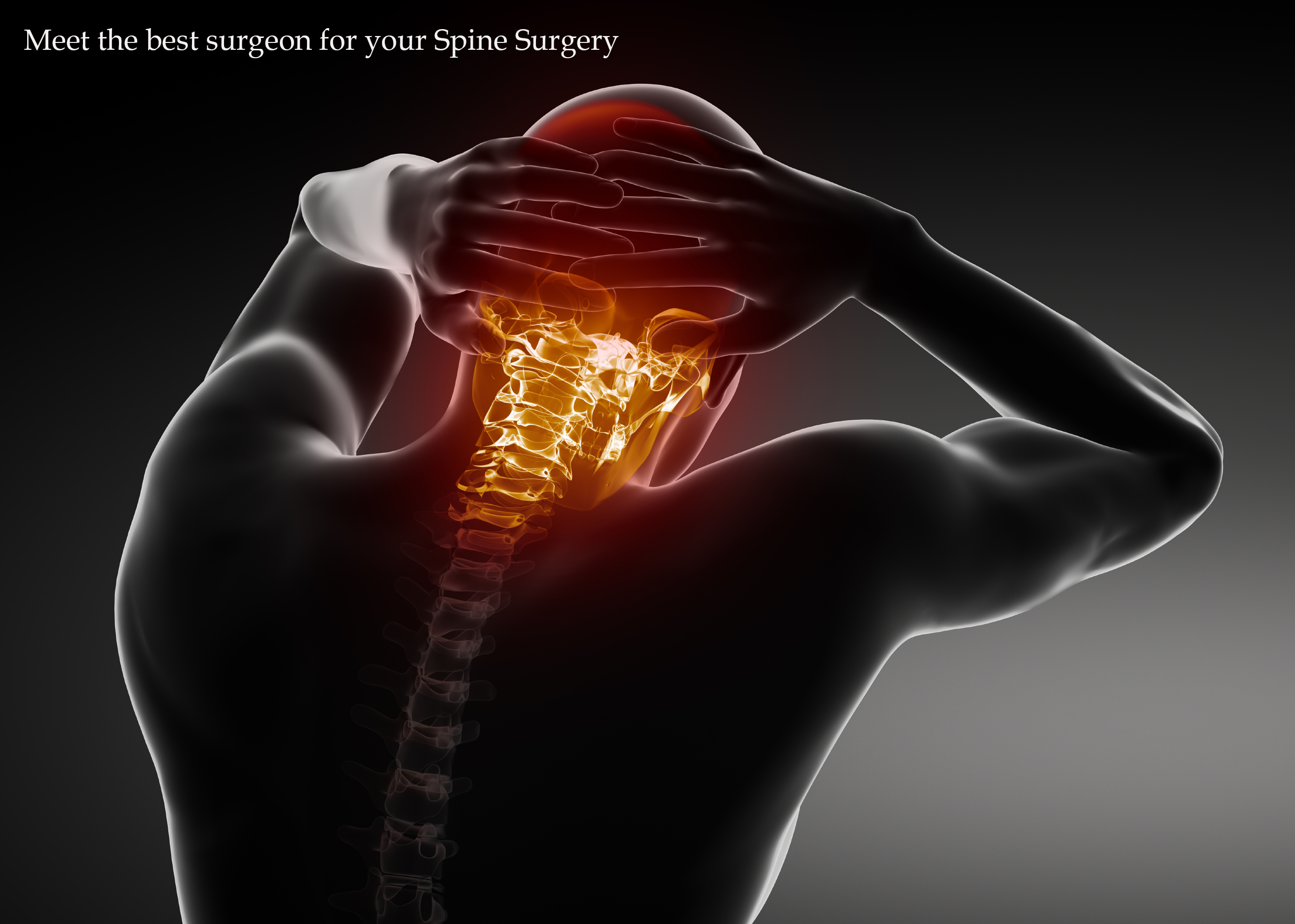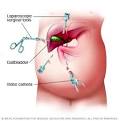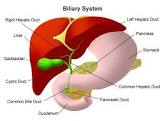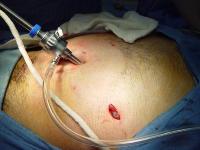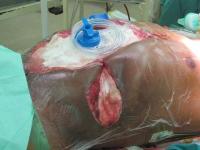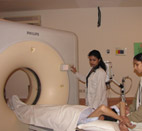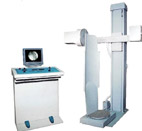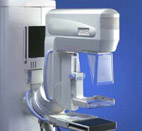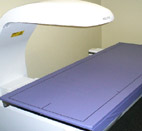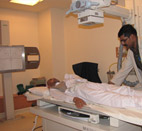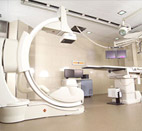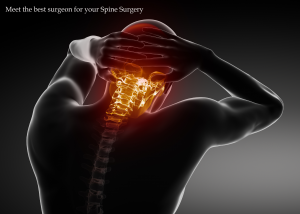VARICOSE VEINS SURGERY
INTRODUCTION:
The description of varicose veins as a clinical entity can be traced back as early as the fifth century BC. Forefathers of medicine including Hippocrates and Galen described the disease and treatment modalities, which are still used today. Throughout the centuries, surgical treatments have evolved from large, open surgeries to minimally invasive approaches. Varicose veins represent a significant clinical problem and are not just a “cosmetic” issue because of their unsightly nature. The problem arises from the fact that varicose veins actually represent underlying chronic venous insufficiency with ensuing venous hypertension. This venous hypertension leads to a broad spectrum of clinical manifestations, ranging from symptoms to cutaneous findings like varicose veins, reticular veins, telangiectasias, swelling, skin discoloration, and ulcerations.
DEFINITION:
When veins become abnormally thick, full of twists and turns, or enlarged, they are called varicose veins. Generally, the veins in the legs and thighs have a tendency to become varicosed.
INDIAN INCIDENCE
In India, the incidence of varicose veins is reportedly less than in the Western countries. This could be genuinely less or underreported as culturally the society does not permit exposure of legs and therefore it may not be bothering many people.
INDICATIONS:
Surgical removal or obliteration of varicose veins is often for cosmetic reasons alone. Noncosmetic indications include symptomatic varicosities (e.g., pain, fatigability, heaviness, recurrent superficial thrombophlebitis, bleeding), or for the treatment of venous hypertension after skin or subcutaneous tissue changes, such as lipodermatosclerosis, atrophie blanche, ulceration, or hyperpigmentation, have developed.
Conservative treatment with stockings and external compression is an acceptable alternative to surgery, but worsening cutaneous findings or symptoms despite these measure usually warrant intervention. Nonetheless, a patient’s desire for surgical management over conservative treatment or for cosmetic purposes alone are both reasonable relative indications for surgery.
TESTS FOR REFLUX
Trendelenburg test: This physical examination technique distinguish patients with reflux at the SFJ from those with incompetent deep venous valves. The leg is elevated until the congested superficial veins have all collapsed. Direct pressure is used to occlude the GSV just below the SFJ. The patient stands with the occlusion still in place. If the distal superficial varicosities remains empty or fills very slowly, the
67
principal entry point of high pressure into the superficial system is at the SFJ. Rapid filling despite manual occlusion means that some other reflux pathway is involved.
Doppler auscultation: A Doppler transducer is positioned along the axis of a vein with the probe at an angle of 45° to the skin. When the distal vein is compressed, audible forward flow exists. If the valves are competent, no audible backward flow is heard with the release of compression. If the valves are incompetent, an audible backflow exists. These compression-decompression maneuvers are repeated while gradually ascending the limb to a level at which the reflux can no longer be appreciated.
Venous refilling time (VRT): This is a physiologic test, again using plethysmography. The VRT is the time necessary for the lower leg to become infused with blood after the calf-muscle pump has emptied the lower leg as thoroughly as possible. In healthy subjects, venous refilling is greater than 120 seconds. In patients with mild and asymptomatic venous insufficiency, VRT is between 40 and 120 seconds. In patients with significant venous insufficiency, VRT is abnormally fast at 20-40 seconds. Such patients often complain of nocturnal leg cramps, restless legs, leg soreness, burning leg pain, and premature leg fatigue. A VRT of less than 20 seconds is markedly abnormal, and is nearly always symptomatic. If the VRT is less than 10 seconds, venous ulcerations are likely.
Duplex US with color-flow imaging (sometimes called triplex ultrasound): This is a special type of 2-dimensional ultrasound that uses Doppler-flow information to add color for blood flow in the image. Vessels in the blood are colored red for flow in one direction and blue for flow in the other, with a graduated color scale to reflect the speed of the flow. Venous valvular reflux is defined as regurgitant flow with Valsalva that lasts great than 2 seconds.
INVESTIGATIONS:
Haemogram
Blood sugar
Serum creatinine
Bleeding time, clotting time and prothrombin time
Xray chest
ECG
Doppler of lower limb venous system to rule out any DVT
RELEVANT ANATOMY
The greater saphenous vein (GSV) originates on the medial foot as part of the venous arch and receives tributaries from deep veins of the foot as it courses upward along the anterior aspect of the medial malleolus. From the ankle, the GSV continues along the anteromedial aspect of the calf to the knee and into the thigh, where it is found more medially. From the upper calf to the groin, the GSV is usually contained within an envelope of thin fascia. Visualization of this fascial envelope is an important way of identifying the GSV with duplex ultrasound. This fascial envelope often prevents the GSV from becoming significantly dilated, even when large volumes of reflux pass along its entire length. A normal GSV is typically 3-4 mm in diameter in the mid thigh.
68
Along its course, a variable number of named perforating veins may connect the GSV to the deep system at the femoral, posterior tibial, gastrocnemius, and soleal veins. The Cockett perforators, between the ankle and the knee, are a special group of perforating veins. Rather than directly connecting the superficial to deep venous systems, they connect the subfascial deep system with the posterior arch vein, which then empties into the GSV.
Besides perforating veins, the GSV has numerous superficial tributaries as it passes through the thigh. The most important of these are the posteromedial and anterolateral thigh veins, found at the level of the mid thigh, and the anterior and posterior accessory saphenous veins at the level of the canal of Hunter in the upper thigh, where a perforating vein often connects the GSV to the femoral vein. Just below the SFJ, the GSV receives several additional important tributary veins. These include the lateral and medial femoral cutaneous branches, the external circumflex iliac vein, the superficial epigastric vein, and the internal pudendal vein. These tributaries are frequently involved in the reflux that leads to the appearance of surface varicose veins on the lower thigh or upper calf.
The termination point of the GSV into the common femoral vein is called the saphenofemoral junction in the English literature but is known as the crosse (i.e., shepherd’s crook) in the French medical literature. The terminal valve of the GSV is located within the junction itself. In most cases, at least one additional subterminal valve is present within the first few centimeters of the GSV. Most patients have a single subterminal valve that can be readily identified approximately 1 cm distal to the junctional valve.
Reflux at or near the SFJ does not always come through the terminal valve of the GSV, nor does it always involve the entire trunk of the GSV. Reflux can enter the GSV below the subterminal valve or even immediately below the junction, passing through a failed subterminal valve to mimic true SFJ incompetence. Reflux can also pass directly into any of the other veins that join the GSV at that level, or it may pass a few centimeters along the GSV and then abandon the GSV for another branch vessel.
When a perforating vein is the primary site of reflux, dilatation of the vessel proceeds both proximally and distally. When dilatation reaches the most proximal portion of the vein, the saphenofemoral or saphenopopliteal junction is often recruited as a secondary point of reflux. Although most large varices are tributaries off of an incompetent GSV or SSV, failed perforating veins or connecting veins can also give rise to independent varices in the greater saphenous distribution without involving the saphenous system itself. Identifying the originating point and the primary pathway of reflux in the thigh is often difficult, which is why duplex ultrasound has become so helpful in varicose vein workup.
OPERATIVE TECHNIQUES:
1. Safenofemoral ligation with long saphenous vein removal for long saphenous vein varicosities. Surgical removal of the GSV has evolved from large open incisions to less invasive stripping. Original methods of stripping used different devices and variations of techniques. The Mayo stripper was an extraluminal ring that cut the tributaries as it was passes along the vein. The Babcock device was an intraluminal stripper with an acorn-shaped head that pleated up the vein
69
as it pulled the vessel loose from its attachments. The Keller device was an internal wire used to pull the vein through itself, as is done today with perforation-invagination (PIN) strippers.
Currently, the technique of PIN stripping begins with a 2- to 3-cm incision made at the groin crease. The femoral vein and SFJ are exposed with dissection and all tributaries of the SFJ must be identified and flush-ligated to minimize the incidence of reflux recurrence.
After ligation and division of the junction, the stripping instrument (usually a stiff but flexible length of wire or plastic) is passed into the GSV at the groin and threaded through the incompetent vein distally to the level of the upper calf. The stripper is brought out through a small incision (5 mm or smaller) approximately 1 cm from the tibial tuberosity at the knee. An inverting head is attached to the stripper at the groin and is secured to the proximal end of the vein. The vessel is then inverted into itself, tearing away from each tributary and perforator as the stripper is pulled downward through the leg and out through the incision in the upper calf. If desired, a long epinephrine-soaked gauze or ligature may be secured to the stripper before invagination, allowing hemostatic packing to be pulled into place after stripping is complete.
An older technique of stripping to the ankle (rather than to just the knee) has fallen into disfavor because of a high incidence of complications, including damage to the saphenous nerve, which is closely associated with the vein below the knee
2. Subfacial ligation with below knee removal of long saphenous vein for below knee varicosities associated with incompetent perforators.
3. Removal of the short saphenous vein is complicated by variable local anatomy and risk of injury to the popliteal vein and peroneal nerve. The saphenopopliteal junction must be located by duplex examination before beginning the dissection, and adequate direct visualization of the junction is essential. After ligation and division of the junction, the stripping instrument (often a more rigid stripper that facilitates navigation) is passed downward into the distal calf, where it is brought out through a small incision (2-4 mm). The stripper is secured to the proximal end of the vein, which is invaginated into itself as it is pulled downward from knee to ankle and withdrawn from below.
4. Stab phlebectomy (or ambulatory phlebectomy)
Performed by Galen as early as the second century, this procedure came back into modern favor during the 1960s and has increased in popularity ever since. This procedure is extremely useful for the treatment of residual vein clusters after saphenectomy and for removal of nontruncal tributaries when the saphenous vein is competent. Ambulatory phlebectomy is a treatment for superficial varicose veins. The procedure involves the removal of the varicose veins through small 2–3 mm incisions in the skin overlying the veins. The procedure may be performed in hospital or outpatient settings. The procedure may be performed with tumescent local anesthesia, such as with lignocaine.
70
A microincision is made over the vessel using a tiny blade or a large needle, a phlebectomy hook is introduced into the microincision, and the vein is delivered through the incision. With traction, as long a segment as possible is pulled out of the body until the vein breaks or cannot be pulled any further. Another microincision is made and the process is begun again and repeated along the entire length of the vein to be extracted. Short segments of veins can be removed through tiny incisions without ligatures, and skin closure is not necessary.
NEWER METHODS
1. Endovenous laser
2. Radiofrequency ablation
3. Sclerotherapy
4. Cutaneous electrodesiccation
5. Subfascial endoscopic perforating vein surgery
POST SURGERY INSTRUCTIONS
After treatment of large varicose veins by any method, a 30- to 40-mm Hg gradient compression stocking is applied and patients are instructed to maintain or increase their normal activity levels. Most practitioners also recommend the use of gradient compression stockings even after treatment of spider veins and smaller tributary veins.
Activity is particularly important after treatment by any technique because all modalities of treatment for varicose disease have the potential to increase the risk of DVT. Activity is a strong protective factor against venous stasis. Activity is so important that most venous specialists will not treat a patient who is unable to remain active following treatment.
COMPLICATIONS
A correct diagnosis of superficial venous insufficiency is essential. Veins should be treated only if they are incompetent and if a normal collateral pathway exits. Removal of a saphenous vein with a competent termination will not aid in the management of nontruncal tributary varices.
In the setting of deep system obstruction, varicosities are hemodynamically helpful because they provide a bypass pathway for venous return. Hemodynamically helpful varices must not be removed or sclerosed. Ablation of these varicosities will cause rapid onset of pain and swelling of the extremity, eventually followed by the development of new varicose bypass pathways.
The most annoying minor complications of any venous surgery are dysesthesias from injury to the sural nerve or the saphenous nerve. Subcutaneous hematoma is a common complication, regardless of treatment technique used. It is easily managed with warm compress, NSAIDS, or aspiration if necessary.
71
WHO DOES WHAT?
Doctor:
i) Surgeon: diagnosis & work up
Pre operative planning
Operative procedure
Post operative follow up
j) Anesthetist: PAC, anesthesia
NURSE:
Dressing of the wound
Pre & post operative care
TECHNICIAN:
Pre op equipment and drugs to be checked and kept ready
Assist anesthetist in the OT
Assist the surgeon, positioning of the patient
RESOURCES REQUIRED FOR ONE PATIENT / PROCEDURE (Patient weight 60 Kgs)
Human Resources
Investigations
Drugs/Consumables
Equipment
Surgeon – 1
Medical Officer /
Assistant Surgeon – 1
Anesthetist – 1
Staff Nurse – 1
Technician – 1
Haemogram
Blood Sugar
S. Electrolytes
S. Creatinine
ECG
X-Ray – Chest
Antibiotics
Analgesic
I.V. Fluids
Sutures
Drains
Anesthetic drugs
OT Table & lights
Instrument trolley
General Surgery Set
Cautery
Suction
Anesthetic Equipment
72
Nursing Orderly – 1
Sweeper – 1
Doppler
Dressings


